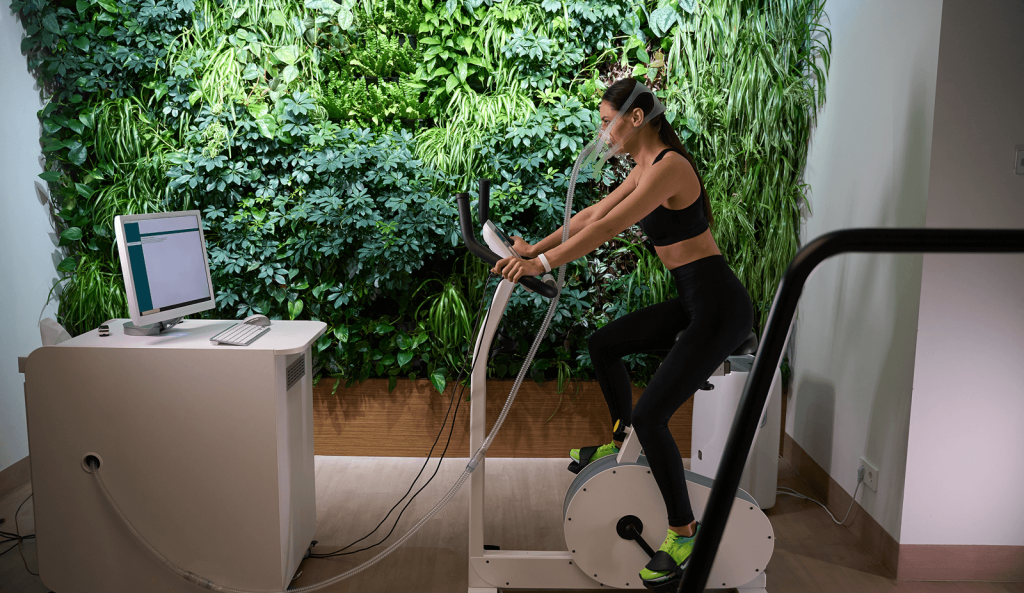
The fitness industry in 2025 is experiencing a revolution, and at the heart of it is Artificial Intelligence. What once seemed like a futuristic concept is now a real-time solution integrated into how we train, track, recover, and stay healthy. AI is no longer just a back-end tech tool or buzzword; it’s a front-line ally for anyone pursuing a better version of themselves.
From hyper-personalized workout plans to live form correction and dynamic recovery suggestions, AI is changing the foundation of what “working out” actually means. It’s shifting the focus away from generic routines toward intelligent, data-driven wellness that meets individuals exactly where they are and adapts as they grow.
Let’s explore how AI is reshaping the way we approach fitness and why it matters more than ever.
Smarter, Personalized Training Plans
Traditional workout programs often rely on a fixed formula: sets, reps, rest periods, and goals designed for the average user. But the truth is, no two bodies are the same, and neither are their needs. That’s where AI takes center stage.
In 2025, AI-based fitness systems will go far beyond standard assessments. They create workout plans that are not only customized but continuously updated based on a stream of data gathered from your body, behavior, and environment.
These intelligent platforms analyze multiple key factors:
- Body composition: fat mass, lean muscle, bone density, and water retention
- Daily activity levels: including steps, calories burned, and movement variety
- Sleep quality: not just duration, but deep vs. light sleep and circadian rhythms
- Heart rate variability (HRV): a measure of stress, fatigue, and readiness to perform
- Recovery trends: how your body responds after intense training or mental stress
- Nutrition patterns: caloric intake, nutrient timing, hydration, and even cravings
Based on this data, your training is adjusted automatically:
- If your HRV is low and your sleep is poor, you may get a mobility and core day instead of heavy lifting.
- If energy is high and recovery is optimal, the system may suggest strength or speed work.
- When progress accelerates, your workload and intensity are gradually increased to support growth.
This dynamic model removes the trial-and-error from fitness. It enables users to train efficiently without overreaching, helping them build a stronger body while maintaining energy, mood, and motivation.
The result? Smarter workouts, fewer plateaus, and a better relationship with exercise.

Real-Time Feedback & Form Correction
One of the most significant gaps in fitness, especially for home exercisers, is feedback. Without a coach or trainer present, it’s easy to:
- Use improper form
- Overload one side of the body
- Neglect the range of motion
- Strain joints instead of muscles
AI is now stepping in to close that gap. Using motion sensors, computer vision, and real-time performance tracking, AI fitness tools can analyze your movements as you train and deliver immediate feedback.
For example:
- If your knees cave inward during a squat, the system can prompt you to adjust your stance.
- If your posture is slouched in a deadlift, it can suggest specific cues to engage your core.
- If your reps become unbalanced, it will flag fatigue or possible injury risk.
This level of coaching used to require in-person sessions. Now, with AI, it’s available at home, at the gym, or wherever you train, without the need for a trainer on-site.
This is especially beneficial for:
- Beginners, who may feel overwhelmed by the form instructions
- Strength athletes, where precision is key to progress
- Older adults, where alignment and joint protection matter most
- Rehabilitation clients who need safe, controlled mechanics
As these systems learn your body over time, they also begin to track progressive improvements in movement quality, flexibility, balance, and coordination.
Smarter Recovery & Stress Management
For years, the emphasis in fitness was on “go harder, train more.” But the science now tells us that true growth happens during recovery, and AI is finally helping users embrace that fact.
Modern smart systems now monitor your nervous system, sleep data, mental stress, and recovery metrics to recommend when to train and when to rest.
Key tools used include:
- Heart Rate Variability (HRV): A low HRV indicates fatigue or stress
- Resting Heart Rate (RHR): Elevated RHR may signal poor recovery
- Sleep quality data: REM cycles, total rest time, and wake frequency
- Stress response tracking: Using breath rate and blood oxygen levels
- Activity balance: Ensuring you’re not overloading one movement pattern
This creates a system where your workouts are not only more effective but also more sustainable. The AI may suggest:
- Light recovery yoga after a stressful week
- A rest day following high-intensity intervals
- A longer cool-down session if inflammation markers are elevated
- Breath-focused core training to reset the nervous system
This kind of programming ensures you don’t just train more, you train wisely, honoring both your physical and mental health.
Integrated Wellness Ecosystems
One of the biggest breakthroughs in 2025 is the unification of training, nutrition, sleep, stress management, and habit formation into one integrated wellness system.
Previously, you needed separate apps and trackers for each. Now, AI combines them to create a central ecosystem that supports every area of your health.
Key components of this integration include:
- Meal suggestions based on your daily energy output and workout plan
- Hydration and electrolyte tracking based on sweat and climate conditions
- Supplement timing that aligns with circadian and metabolic rhythms
- Sleep optimization with suggestions like blue-light management or melatonin timing
- Breathing techniques to balance cortisol and improve oxygenation
- Mindfulness or focus tools delivered post-workout to aid recovery
This full-spectrum approach ensures that every area of your wellness is supported by the data you generate each day. You no longer need to guess what to eat, how hard to train, or when to rest. Your system evolves with you, removing confusion and helping you develop stronger, more sustainable habits.
Why It Matters
The power of AI in fitness is not about technology for its own sake; it’s about giving every person access to personalized, results-driven health solutions, regardless of experience level, location, or schedule.
AI fitness matters because it:
- Removes the guesswork from training
- Helps prevent injury and overtraining
- Improves adherence by meeting you where you are
- Makes elite-level coaching accessible to all
- Creates a balance between performance and recovery
- Integrates mental and physical health in a single flow
Whether you’re someone returning to movement after years of inactivity, a busy professional trying to stay consistent, or a serious athlete chasing performance gains, smart training can adapt to your life.
It’s no longer about doing more reps, following fad routines, or punishing your body. It’s about listening to it, using data wisely, and training with purpose and precision.
The Future of Fitness Is Intelligent
As AI continues to evolve, so will the tools that support your health. We’re entering a phase where fitness is no longer separate from life; it becomes seamlessly integrated into how we live, sleep, eat, work, and grow.
At HealthX, we believe this shift marks a powerful opportunity. When fitness becomes personalized, recovery becomes smarter, and your plan evolves with you, not despite you, you gain a new sense of confidence and control.
The revolution isn’t coming. It’s already here.
Smart fitness isn’t about working harder—it’s about working with your body, intelligently and intentionally.













